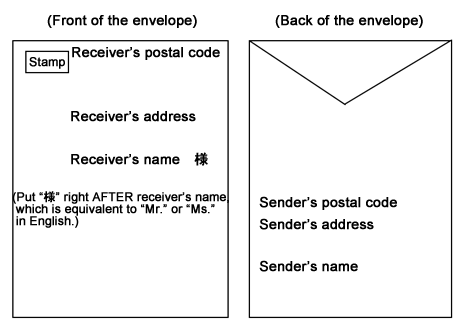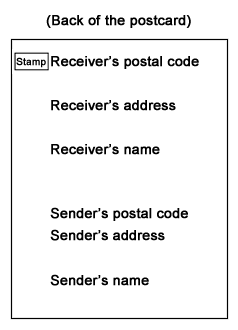- Q :How do I get my own mobile phone?
- A :The following are the major mobile service providers in Japan.
Ō¢ĀNTT docomo
Ō¢Āau
Ō¢ĀSoftBank
Ō¢ĀY!mobile
If you stay in Japan for 90 days or longer
⇒ You will be eligible to make a contract on your own behalf.
Items required by all mobile service providers:
alien registration card (a period of stay should remain more than 90 days), credit card (or bank card), passport and sufficient funds to purchase the mobile phone itself.If you stay in Japan for less than 90 days
⇒ You will not be eligible to purchase a mobile phone under your name. Only a lease contract is possible.Lease
JAL ABC (An online application is available.)
https://www.jalabc.com/rental_service.html
SoftBank (An online application is available.)
http://www.softbank-rental.jp/rental.php
Other places offering rental phones
https://www.jalabc.com/rental_service.html
The following are some of the frequently-asked questions from our foreign customers about life in Japan.
If you cannot find the answer to your question, please feel free to contact us anytime.
- Q :Please tell me how to use bus services in Japan.
- A :You can find many bus services across Japan along with very convenient rail networks.
Route maps are usually available at each train station.Fares can be paid by cash or by a pre-paid card which might be provided by individual bus companies.
Usually, you cannot use a bill larger than a thousand-yen bill.
Some bus companies operate on pre-payment system while others use a post-payment style.
Toei Bus : Tokyo Metropolitan Bus (recognizable by their green color) ⇒ operates on a pre-payment system with all routes cost 200 yen.
Other bus services : Their fares vary depending on distance, and often operate on a post-payment system.
When you want to pay by cash ⇒
On buses with variable fare rates based on distance :
1.Please pick up a ticket when you get on the bus.
2.You can check your fare on the screen usually found next to the driver's seat by finding the number printed on your ticket when getting off the bus.
If you want to use a pre-paid card ⇒
1.Instead of taking a ticket, you need to insert your pre-paid card into a card-reader both when you get on and off the bus.
2."Pasmo Card" : You can pay your fares by Pasmo Card on JR, other railways, and buses, mainly in Kanto area. You can buy them at each train station.
"Common Bus Card" : They are the ideal option for frequent users of bus services.
(ex: pay \5,000 for \5,850 worth of fare)
Cards are available at travel agencies, or can be bought on the bus.
- Q :What should I do in an emergency?
- A :Dial the following numbers:
Police: 110
Ambulance and Fire: 119
*toll free
- Q :How do I send parcels within Japan?
- A :We have several service providers who will usually come to your house to pick up the parcels you want to send.
The following are some of the main providers of such services.The maximum sum of three dimensions of a parcel must be no more than 170cm, and weigh no more than 30kg.
’╝ŖThis doesn't include moving delivery services or air delivery services. Please contact each delivery service provider for further details.
Yamato Transport Co., Ltd."Takkyubin", "Takkyubin Time Service"
Sagawa Express Co., Ltd."Hikyaku Express", "Hikyaku Air Express"
Japan PostYu-Pack
Check and compare the cost of different international delivery services via the following link.
http://www.shipping.jp/en/
- Q :How do I address an envelope/postcard in Japan?
- A :The way of addressing an envelope/postcard is unique in Japan. Follow the instructions below.
How to address an envelope
On the front of the envelope : Receiver's address and name
On the back of the envelope : Sender's address and name
Stamp : Place on the front top-left corner
How to address a postcard
On the front of the postcard (in the center) : Receiver's address and name
On the front of the postcard (lower) : Your address and name
Stamp : Stamps are already printed on most postcards. If not, you need to buy one on your own and put it on.
Japan living guide (For international student)
http://www.jpss.jp/guide/index.html






